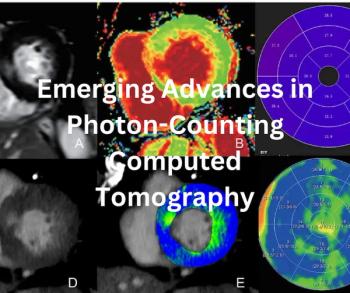
FDA clearances boom in May
FDA reviewers cleared 34 radiological devices in May, the highest number for this month since 2000, when DI SCAN began tracking clearances. The stellar performance puts the industry on track for a record year.
FDA reviewers cleared 34 radiological devices in May, the highest number for this month since 2000, when DI SCAN began tracking clearances. The stellar performance puts the industry on track for a record year.
Ten of the 34 clearances in May involved ultrasound equipment. Eight addressed image management. Radiation therapy and MR followed with five and four clearances, respectively. There were three clearances in the field of nuclear medicine; x-ray and CT each had two. One of the devices cleared by the FDA, an intraoperative tool that uses laser light and fluorescent dye to assess the integrity of the coronaries and bypass grafts, fell outside the usual categories. It was initially cleared by the agency in early 2005. This latest clearance, obtained by developer Novadaq Technologies of Mississauga, ON, entails only a labeling revision, according to the company.
More in line with traditional radiology are five of the ultrasound systems that gained clearance last month. The Logiq P5 and A5, submitted together by GE Healthcare, are full-featured, general-purpose diagnostic ultrasound systems consisting of a mobile console approximately 49 cm wide, 64 cm deep, and 135 to 141 cm high. They are offshoots of GE's Logiq 5 Pro platform.
Medison's SonoAce Pico and Shenzhen Mindray's DP-6600 are both general-purpose, mobile, software-controlled, diagnostic ultrasound systems. The EMS9U from Nodecrest of Herndon, VA, is a dedicated transcranial system offering pulsed and continuous wave Doppler for assessing flow in the cerebral arteries.
In nuclear medicine, MimVista won clearance for its software that displays, registers, and fuses medical images from multiple modalities. The software, called MIM 4.0, also evaluates cardiac left ventricular function and perfusion, including left ventricular end-diastolic volume, end-systolic volume, and ejection fraction.
The software's region-of-interest feature reduces the time needed for physicians to define such objects as tumors and organs in 3D volumes by providing an initial definition of contours. MIM 4.0 also assesses PET and SPECT brain scans, automating quantitative and statistical analyses by registering the scans to a standard template. It allows users to compare intensity values to a reference database or to other PET/SPECT scans voxel-by-voxel within stereotactic surface projections or within standardized ROIs.
In image management, the FDA cleared TeraRecon's AquariusAPS server, which processes multimodality images to produce information not possible on the company's AquariusNET server. The new features allow users to isolate tissue in and around the heart captured on CT, calculate a parametric color overlay map for time-dependent MR or CT scans, identify locations of sphere-like structures on CT, automatically calculate a transformation to register one set of images to another, and calculate the volume of certain structures, possibly with time dependence. The resulting data and new images are transmitted using the DICOM protocol to other devices supporting this standard protocol. The AquariusAPS Server relies on off-the-shelf Pentium III-based PCs running a Windows NT 4.0 or Windows 2000 operating system.
In MR, Siemens was cleared to begin marketing an eight-channel phased-array head coil for use with a 1.5T scanner in the operating room before, during, and after brain surgery. The coil can also be used outside the OR for diagnostic examinations and functional MR.
Newsletter
Stay at the forefront of radiology with the Diagnostic Imaging newsletter, delivering the latest news, clinical insights, and imaging advancements for today’s radiologists.

































